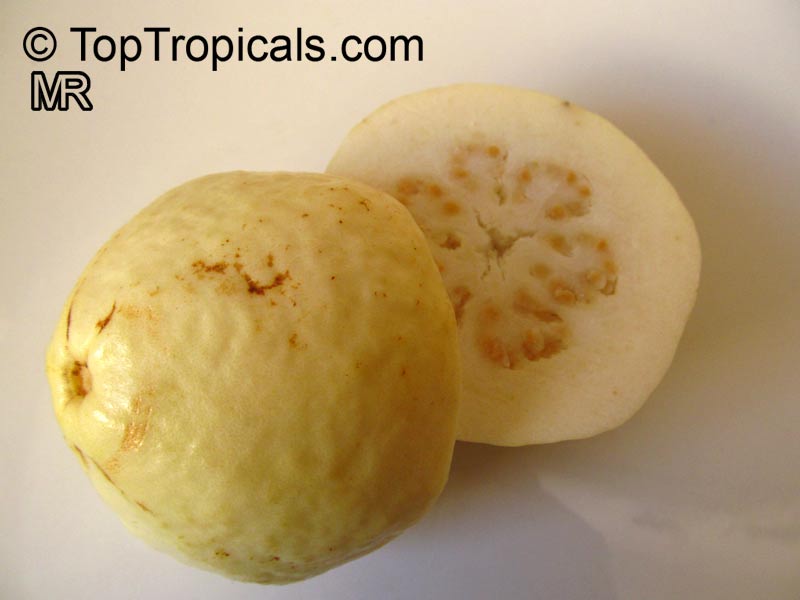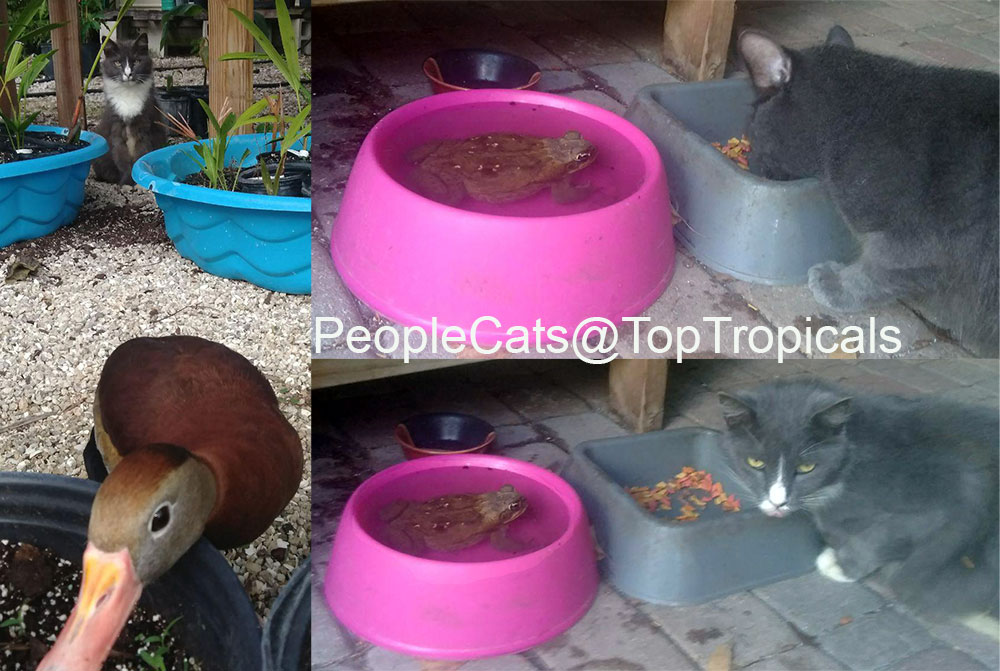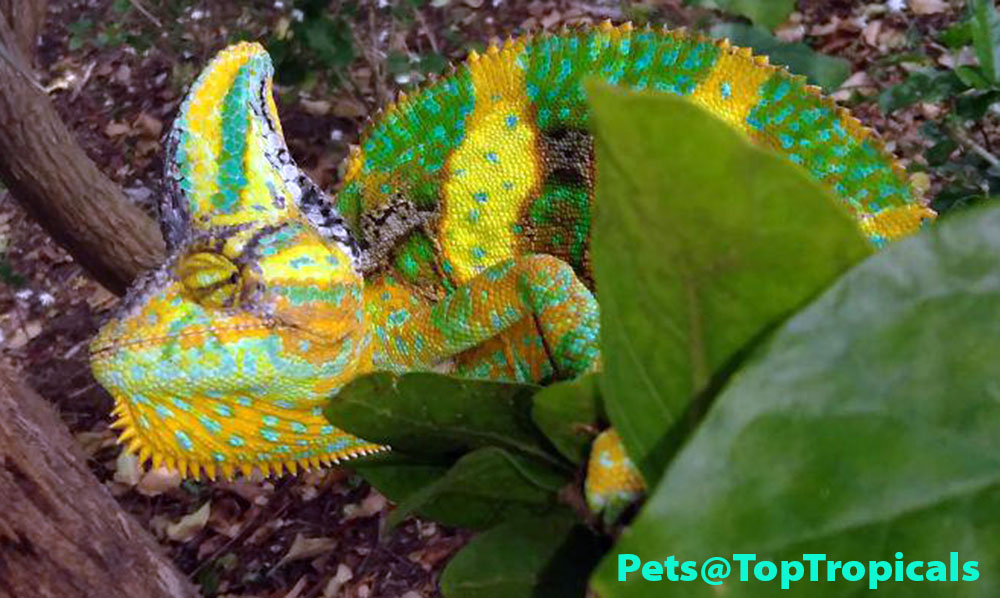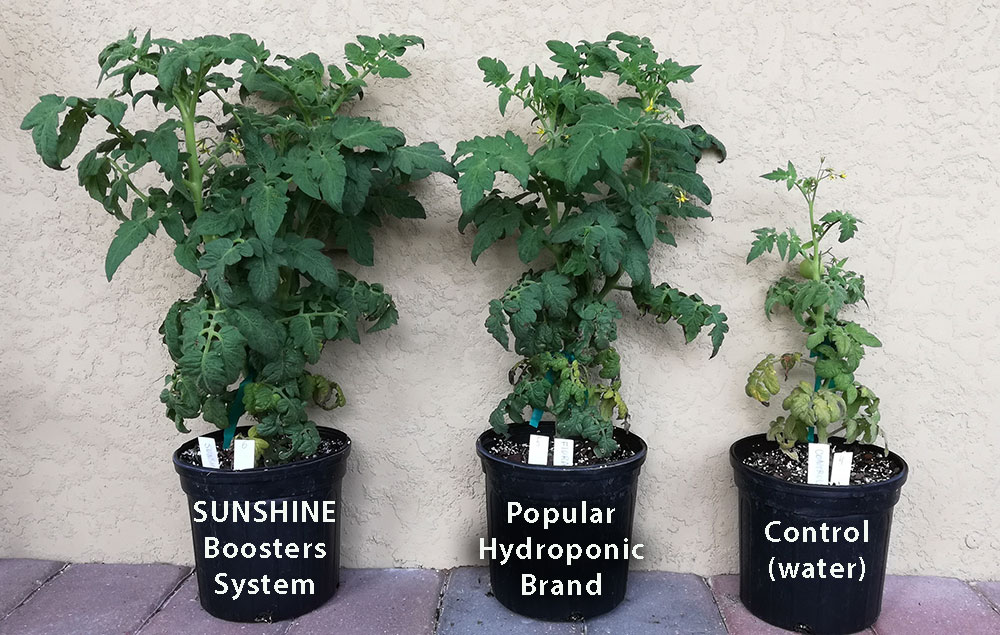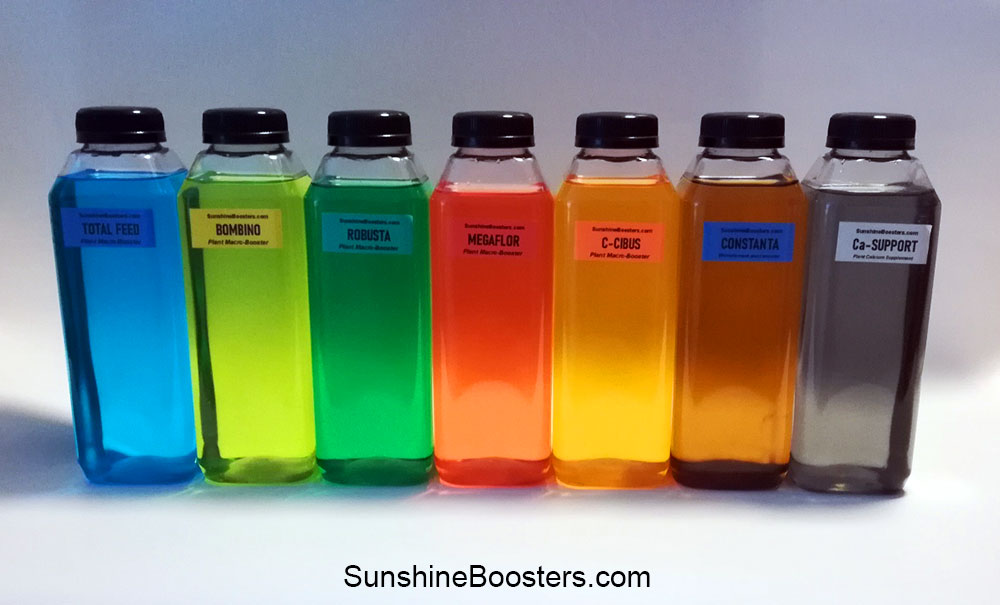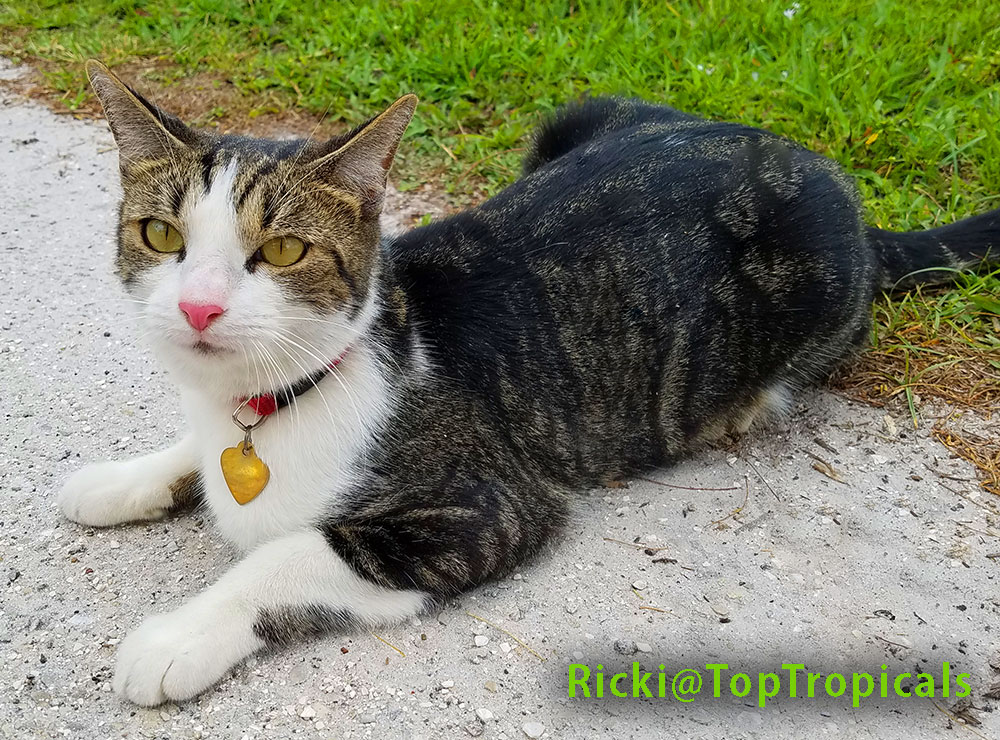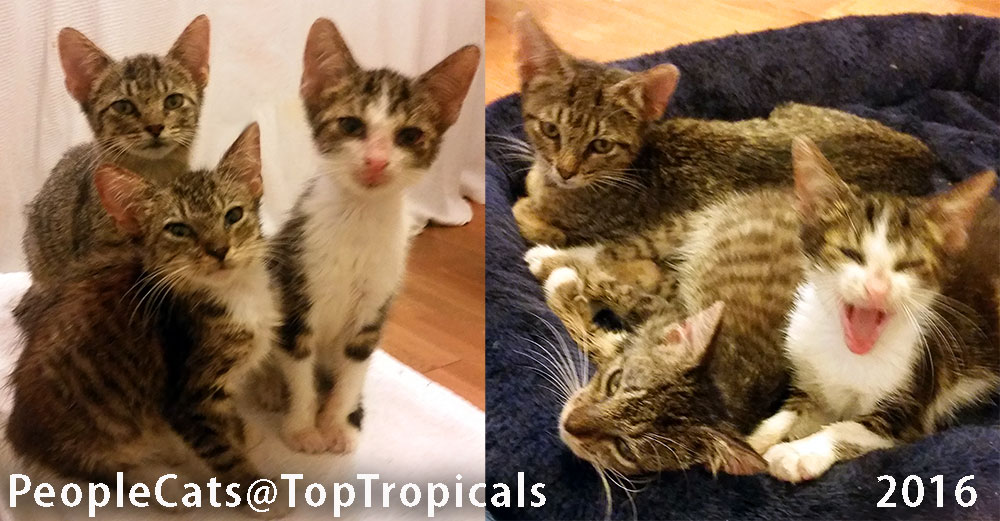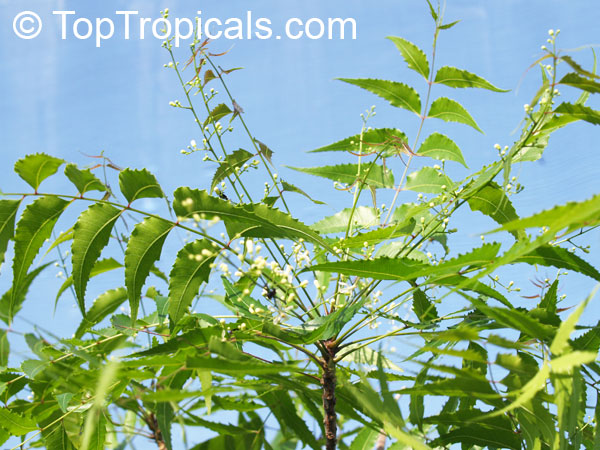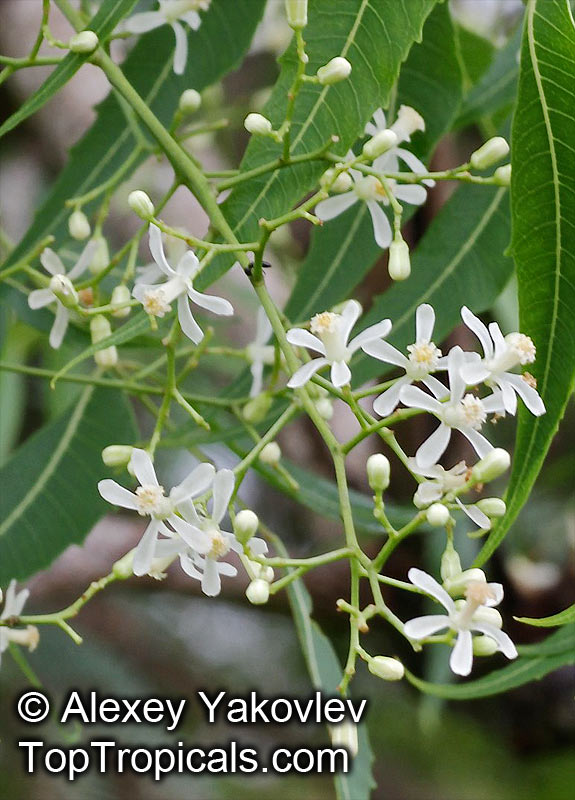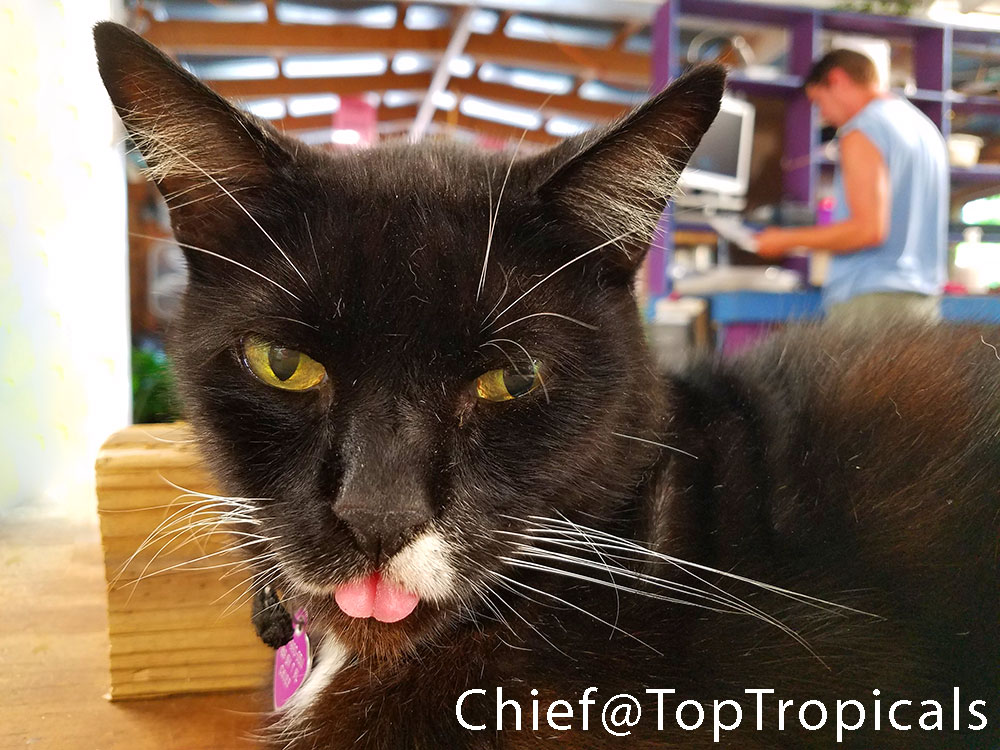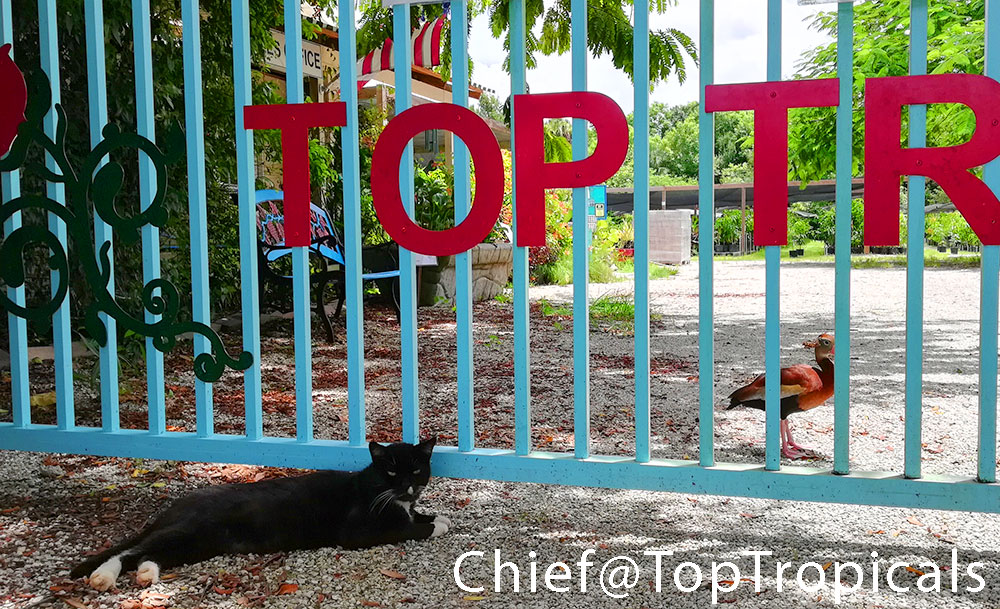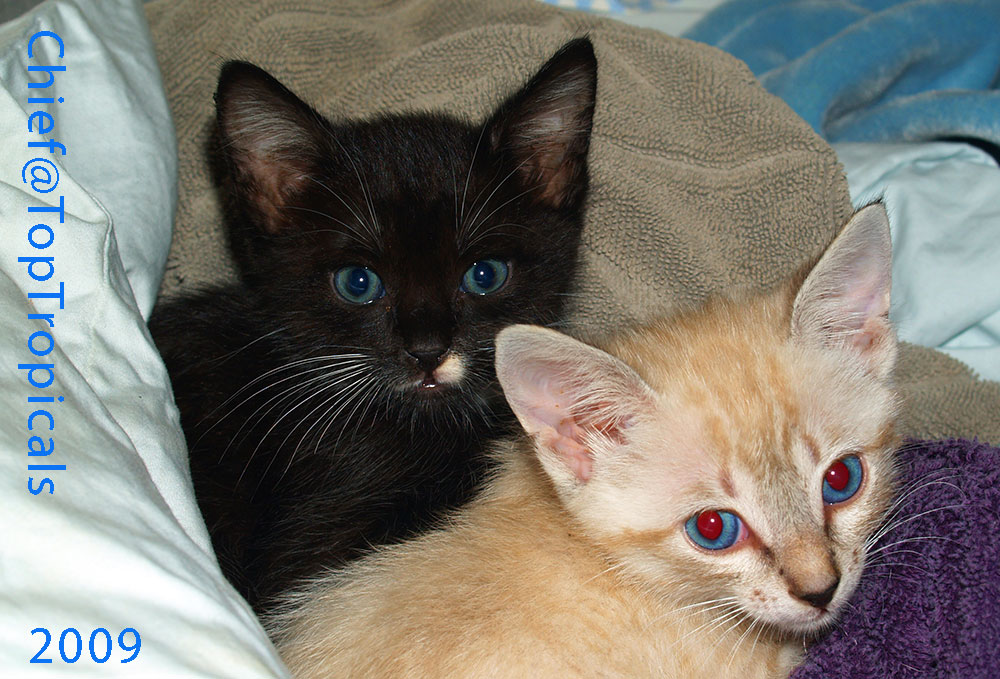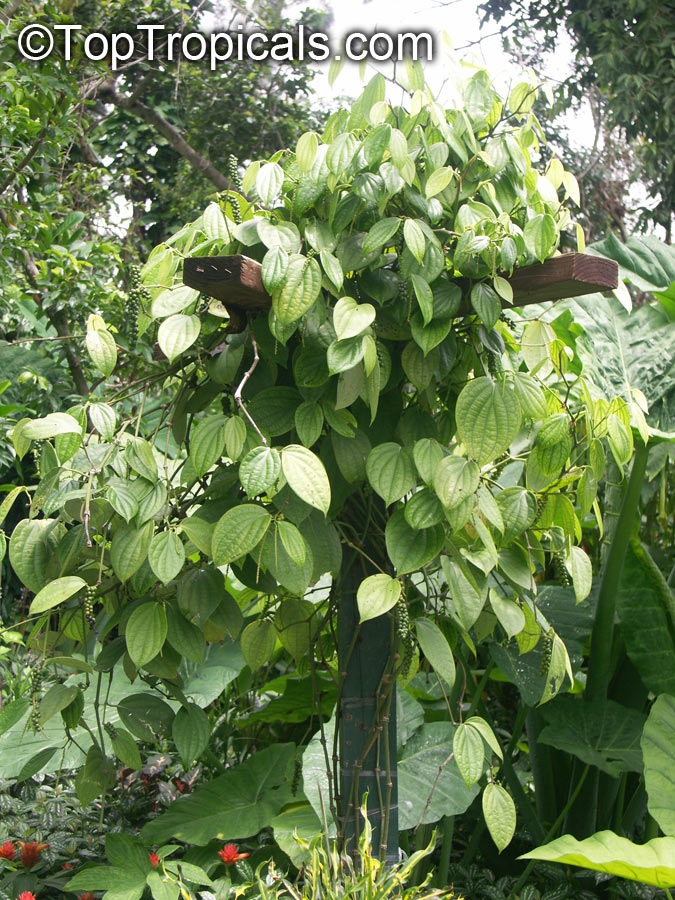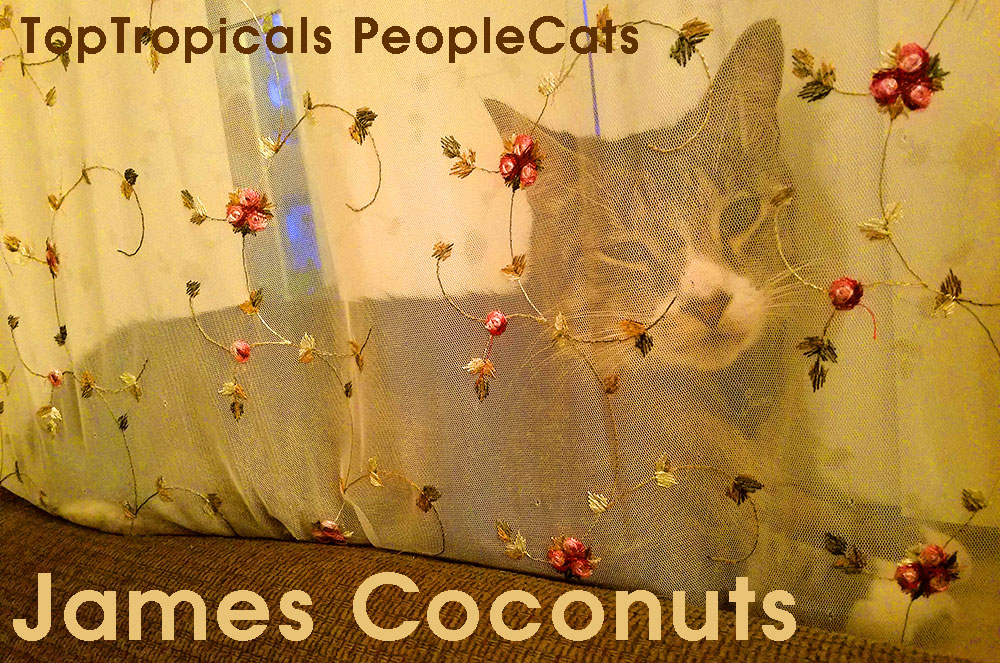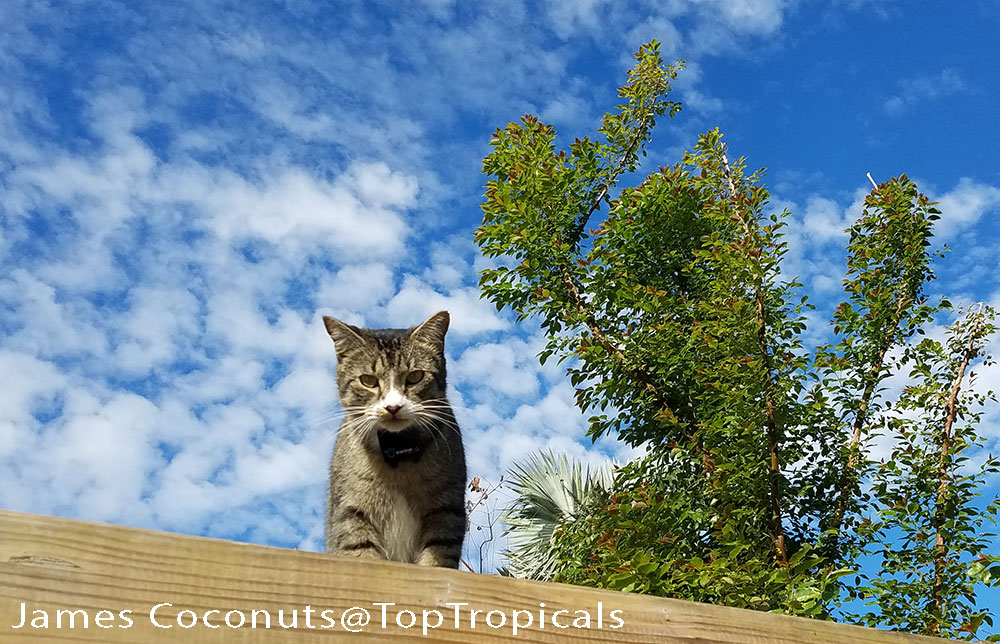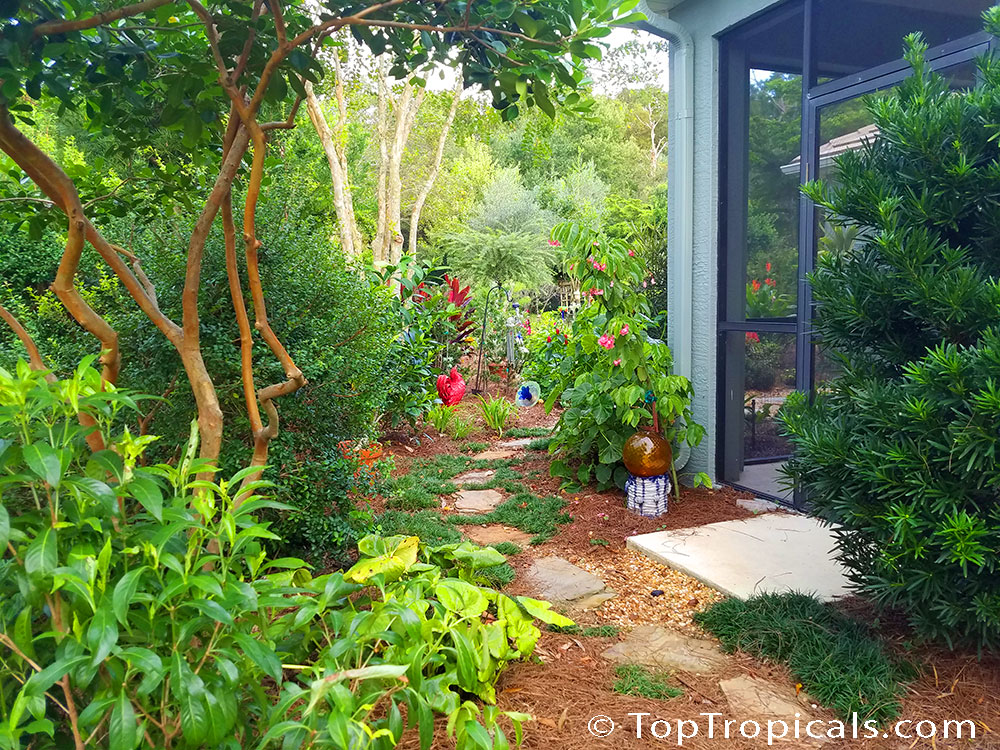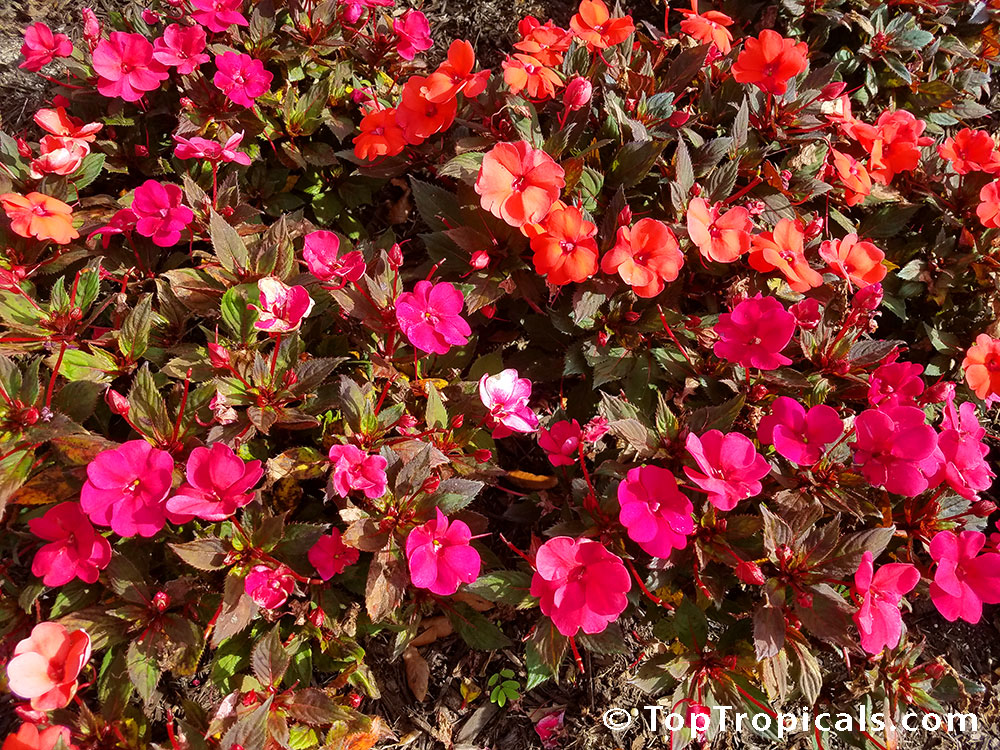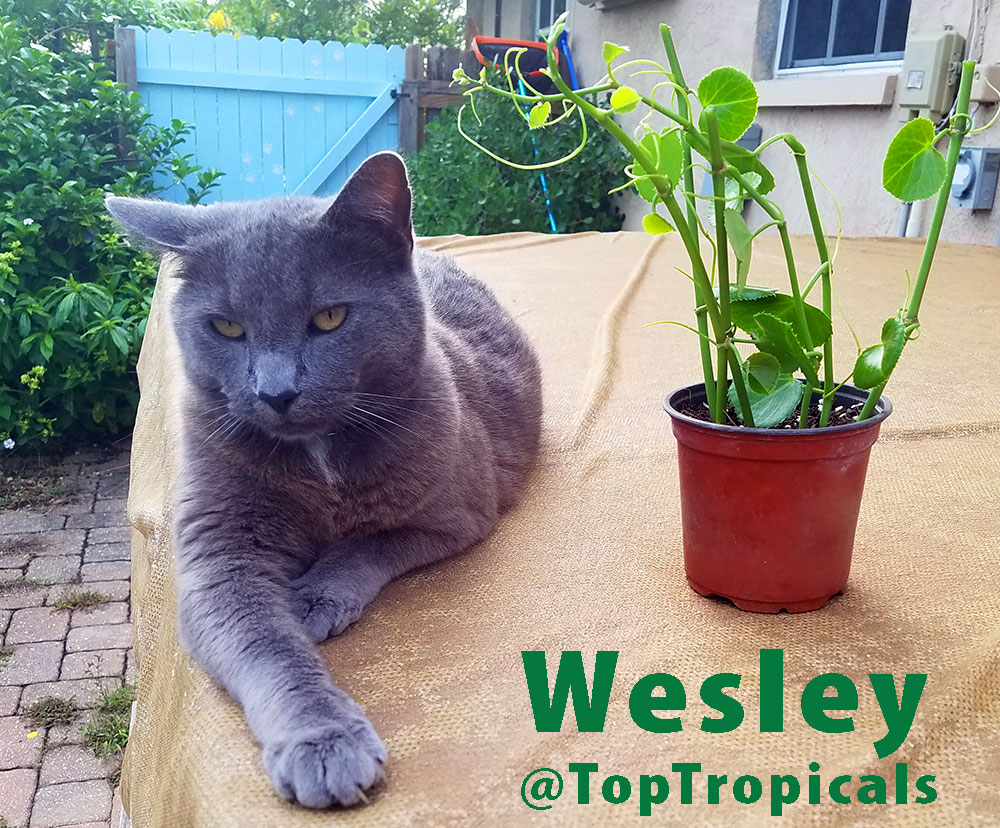Garden Blog - Top Tropicals
Date:
Best tasting white guava
Q: What's your best tasting white guava?
A: Our favorite white Guava is Viet Nam variety that is also very rare and hard to find. The fruit is
very large, up to 6" in diameter, the pulp is very sweet and somewhat
crunchy.
The seeds are small which makes it more pleasurable to eat out of hand.
Another great feature of this variety, it stays compact and branches do not
get leggy, unlike most guavas. It can be easily grown in a container,
trimmed to the desired size and it will produce fruit under proper care.
Another cool variety is Indonesian, it also has a large round fruit and very few seeds to compare with others.
And last but not least, if you prefer soft fruit to crunchy, the Peruvian variety is a great choice. The fruit is pear-shaped.
Remember to provide plant food for good production, especially if grown in a container.
Fruit Festival Plant Food - Super Crop Booster
Mango-Food - Smart Release Fruit Tree Booster
SUNSHINE C-Cibus - Crop Nutrition Booster
Date:
Meet PeopleCats of TopTropicals. Cat, Pet & Plant Community
Marco watching Dobi Duck; King & Marco with their Pet Frog
Barcy, Wesley and Coconuts at sweet liquor tasting
Anyone knows the name of this creature? He feeds on our Jasmines!
Date:
Using SUNSHINE Complete Nutrition System
For hydroponics and potted plants
Q: I recently bought both the 5ml of the sunshine epi and the 100 ml advanced nutrition kit. I read on the paper for the Epi not to use any other strong fertilizers along with this but I was wondering if it'd be alright to use both this foliar spray and nutrition watering together?
A: All solutions in SUNSHINE Booster Nutrition System (NPK-macro and micro-boosters) are
compatible.
The only exception is Sunshine-Epi - brassinosteroid bio-stimulant. Epi
should be mixed with distilled water separately from other boosters. The
reason is, it is very bio-active, and if mixed with other compounds, oxidizes
quickly which may affect its performance.
Sunshine-Epi solution must be prepared using distilled water and applied as foliar spray only (it only works on contact with leaves and not through the root system). Epi shows extremely impressive results when you apply it before the application of other nutrients because it increases plant metabolism; so all boosters become even more effective if you spray Epi the day before.
When using Micro- and Macro-boosters, you may mix all components in one watering can/tank (except for Epi), using regular tap water. Besides watering root ball, the macro-micro solution can be also used for foliar spray. It is optional, as in some circumstances growers prefer to keep leaves dry at all times: to stay away from mold, fungus and other issues caused by the wet environment.
Here is an example of Sunshine Boosters Nutrition System application:
1. Daily watering in one can: NPK 25 ml/gal (one of 5, depending on growth stage) + Constanta 5 ml/gal + Ca-Support 5 ml/gal, mixed in tap water
2. Every 2 weeks: spray Sunshine-Epi 2.5 ml/gal - to boost the immune system and growth rate,
mixed in distilled water
3. From daily to every 2 weeks: Sunshine-Power-Si 25 ml/gal to protect from diseases and keep pH at
5.5-6.5. Can be used as often as daily and mixed with a daily watering solution
(1)
4. As needed: Sunshine SuperFood and GreenLeaf - for correcting deficiencies. Can be also mixed with the
daily solution (1)
Make sure to prepare a solution right before use and do not store solution for more than 1 day. Keep concentrates and solutions protected from bright sunlight.
Here is also advanced information on Sunshine Boosters compatibility.
Date:
Meet PeopleCats of TopTropicals. Cat of the Day: Ricki
The Smallest Cat
Ricki is a tiny little cat. He is already 3 y.o. but still feels shy because he always has been the smallest one... He arrived to TopTropicals as a little kitten, along with his 3 sisters, Charlie, Purry, and LadyBug, in a box. Ricki was the last kitten in the littler and almost half the size of other kittens! But his ears were the biggest. So he became a very Wise Puuurson who knows how to Listen.
Not only Ricki was the smallest, but he also was pretty sick when we first got him at the age of 4 weeks. He had a bad infection in both eyes and could hardly see anything... His 2 sisters got adopted by employees, but no one wanted to adopt poor Ricki... so he stayed at TopTropicals. Almost 2 weeks of therapy finally helped him to get all better. Now he is one of the cutest Little People!
Ricki has his own spot at the corner of a dinner table. He is not interested in stealing any food (unlike Wesley), he just wants to be involved in a dinner conversation...
Ricki likes treats and remains very shy, staying indoors. If you visit our Garden Center, you may bring him a small treat - his favorite "Temptations".
Wesley and Ricki at Dinner conversation
LadyBug, Purry, and Ricki, 2016.
Date:
NEEM - The Free Tree of India
By Onika Amell, tropical plant specialist
Q: What is Neem oil and tree, and and can we grow the Neem tree here in the US?
A: Neem! What an extraordinary, fascinating tree! I'm personally convinced every garden should have one, if your climate allows it. Neem tree - Azadirachta indica - will very quickly become a valuable shade tree in your garden. They can grow up to eight feet per year! Neem trees are also known to grow very well in areas with infertile soil and under very dry conditions, which makes them perfect for xeriscaping. Not only is Neem fast-growing, but it's a beautiful tree with wide-spreading branches and dark green leaves. It will form a dense, round canopy, up to 60 ft wide.
This wonderful tree has been used by humans for thousands of years. Did you know Neem has more than 100 unique bioactive compounds? Surprisingly, a lot of gardeners are still unfamiliar with it!..
Date:
Meet PeopleCats of TopTropicals. Cat of the Day: Chief
Shipping Department Supervisor
Chief is one of the oldest PeopleCats at TopTropicals. And of course the
most experienced one. So he is in charge of the Shipping Department.
Chief likes to chill out in front of the nursery gate together with Marco, Lil S*t and Dobi Duck.
Chief doesn't like car rides to his vet and when it happens, he is very
loud. The sound he makes is "Oy-yo-yo-yooooy!!!"
Chief likes milk. He has a white spot on his black face - from drinking
so much milk! No matter how much milk we buy for him, there never seems to
be enough. Chief even has a refrigerator for his milk. If you come to visit
Chief at TopTropicals Garden Center, you may bring him a small bottle of fresh
milk!
Thank you for your purrrrrrchase for Chief!
Date:
Fun of growing your own Pepper
By Onika Amell, tropical plant specialist
Q: Can you grow your own black pepper plants in the USA?
A: Who does not love the smell of freshly ground pepper, especially that lovely combination of white, green, black and red peppercorns, which are so much more interesting than just plain black corns. Yes, you can absolutely grow your own pepper! Peppercorns come from the plant Piper nigrum.
Growing Pepper Plant
Black pepper plants are actually vigorous vines, although they are
pretty slow growing and can be kept in a pot as a compact plant. But they will
need a strong support to climb over. Indoors, you can provide this support by
installing a trellis in a large pot. Some gardeners prefer to grow them as a
hanging plant instead. In warm climates, you can plant them directly outdoors
in a protected location with partial shade. These plants need rich, moist,
well-draining soil and warm, humid conditions. Peppers do not like temperatures
below sixty degrees, although they can survive some cold spells. It is very
important to bring these plants indoors or wrap them in a blanket if colder
weather arrives.
If you live in colder parts of the country, you can certainly grow
peppercorns in large pots. Grow them outdoors during the summer and move them
indoors during the winter, or grow them year-round in your greenhouse.
Houseplants will need bright light and consistent moisture. Spray the leaves regularly
with a bottle of water to increase humidity. Do not allow room temperatures
to fall below sixty degrees.
Besides the benefit of being able to grow your own gourmet pepper
corns, the foliage, as well as the flowers on this plant, are beautiful in its own
right. Off-white flowers appear from spring through summer, followed by slow
fruit production. The berries will appear on spikes, with 50 to 60 berries
per spike.
Fertilize this vine in the spring before new vigorous growth emerges. We
recommend:
Tropical Greenhouse Plus - Plant Booster
Tropical Allure - Smart-Release Booster
You may be surprised to learn that black, white, green and red peppercorns are all the same seed on the same plant in the various stages of development and processing.
Black peppercorns are the most familiar and come from the corns that have reached their full size but are still green and not quite ripe. They are picked and allowed to dry in the sun. Enzymes in the berries cause the skin to turn black during the drying process. They are the strongest in flavor.
White peppercorns are the mature berries that ripen to a red color before being picked. After harvesting, they are soaked and rubbed free of the outer skin down to the smooth white underlayer, then dried and bleached by the sun. They are slightly milder than black pepper.
Green peppercorns are the unripe peppercorns picked at the same stage of ripeness as black peppercorns, but not allowed to dry. They can be pickled in vinegar or brine. They are the least pungent.
Red peppercorns are the mature, but unshelled version of the peppercorn. One can usually find them in some gourmet and health food stores. They can be quite expensive.
Ground pepper will only stay fresh for about three months, but
peppercorns will last indefinitely. To make the most of your pepper harvest, store the
peppercorns in an airtight container in a cool, dark location. Grind them
immediately before use for the best flavor.
There is nothing like freshly ground black pepper simply combined with
a good quality olive oil and a splash of balsamic vinegar. This makes a
wonderful dipping sauce for fresh bread. Simple, yet elegant. All the better if
the pepper was grown in your very own garden!
Date:
Meet PeopleCats of TopTropicals. Cat of the Day: James Coconuts
Winning a Lucky Ticket for a Croissant
Many of you have already met James Coconuts who has been in charge of
our Customer Service Team for a long time. After many years of hard work,
Coconuts is now finally retired in a comfortable home but still does some
consulting for Anna Banana and other office team members. So you will hear from him
again in our Blog, helping with planting, and organizing holiday events.
Originally, Coconuts came from the Middle-of-Nowhere (what a surprise).
Tenants from our old property in Punta Gorda left him behind when they moved
out... So Coconuts lived in woods for a month and, considering being deaf
(but not dumb!) from birth, living in the wild was quite a challenge for him.
When he saw our car, he jumped right into the open trunk and never regretted
that decision. We left us no choice but to take him into our big CatFamily. He
had starved so much that he ate a whole croissant... as we had nothing else
to offer at the moment... Since then, Coconuts went through lots of troubles
including a minor stroke, being run over by a truck, lost in woods again for
a month, and surviving a wild animal fight followed by a life-threatening
abscess. Finally, he decided to stay away from trouble and happily landed on his
couch with Margaritas and Nachos, getting chubby, singing his favorite opera
songs, and writing poetry.
Date:
Fertilizing in Winter?
Q: I'm a bit confused about what winter fertilization schedule I should follow in South Florida. For blooming plants, usually, I use a monthly granular bloom booster fertilizer as well as a liquid fertilizer every 10 days or so. Should I continue that schedule in the winter as well? Should I stop fertilizing altogether in the winter? How about fruit trees? What fertilization schedule should I follow in the winter?
A: Here is a general fertilizing schedule for established plants that we follow here
in SW Florida.
The rule of thumb is, do not fertilize (with macro- NPK elements) when
minimum temperatures drop below 65F and stay at that level for more than 7
days. At this temperature point, most of the tropical and subtropical plants
slow down their metabolism and some of them going into dormancy. This means,
nutrients are not consumed as much as during active growth period, and built-up
nutrient supply within a plant plus whatever is available in the soil is
just enough to get by through the winter. So additional fertilizing is not
necessary. You may continue micro-element supplements and bio-stimulants
throughout the year. In fact, it is highly recommended to do so, to help the plant
survive cold spells. These are very effective tropical plant protectors:
SUNSHINE-Epi - Brassinosteroid plant hormone
SUNSHINE-Power-Si - Advanced plant protector with Silicon
SUNSHINE SuperFood - Complex microelement supplement
This rule is applied to both flowering and fruiting plants, in general. However, some species are winter-flowering and winter-fruiting. For those, you can make an exception and provide extra nutrients for flowering and fruiting, as long as the weather stays warm. During cold spells, avoid any NPK fertilizers and use only bio-stimulants and micro-elements. If you apply NPK during cold, it won't be consumed by a plant, build up in the soil, and may create a root burn situation.
In simple words, fertilize from March to October. Give plants some rest from November to February.
Date:
Meet PeopleCats of TopTropicals. Cat of the Day: Wesley (Vasiliy)
Vasiliy is Russian Blue. Everybody calls him Wesley. Wesley is Marco's twin brother. They both were found as little kittens in a box
that someone dropped off... right, under TopTropicals car.
Marco is long hair, and Wes is short hair, so Wes doesn't get a haircut
like his bro.
Although Wes is much bigger and fatter, he is not as brave as skinny Marco
who fearlessly spends his days at the front gate. Wes is afraid of Thunder,
Rain, and a Doorbell. So he is mostly hiding behind the scene... unless food
is on the table!
In the photo: Wesley Roll - bikini shot
